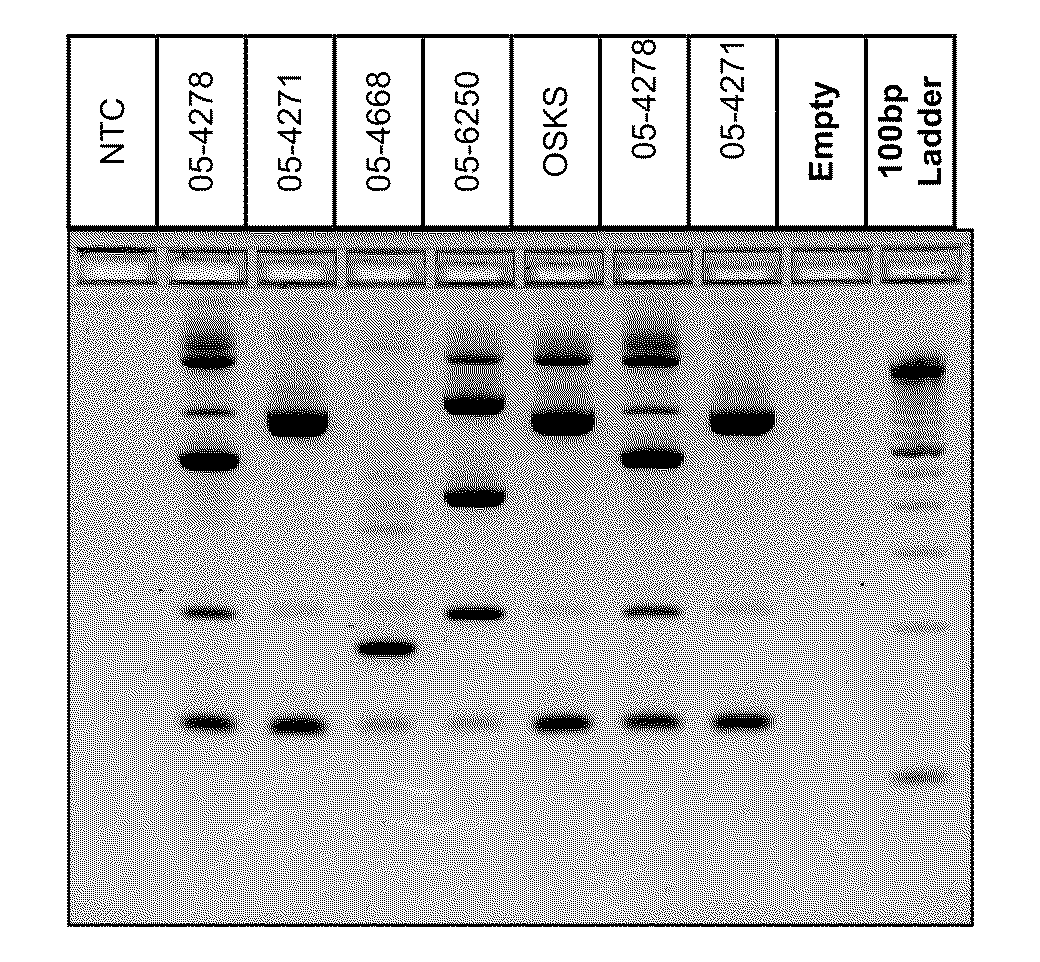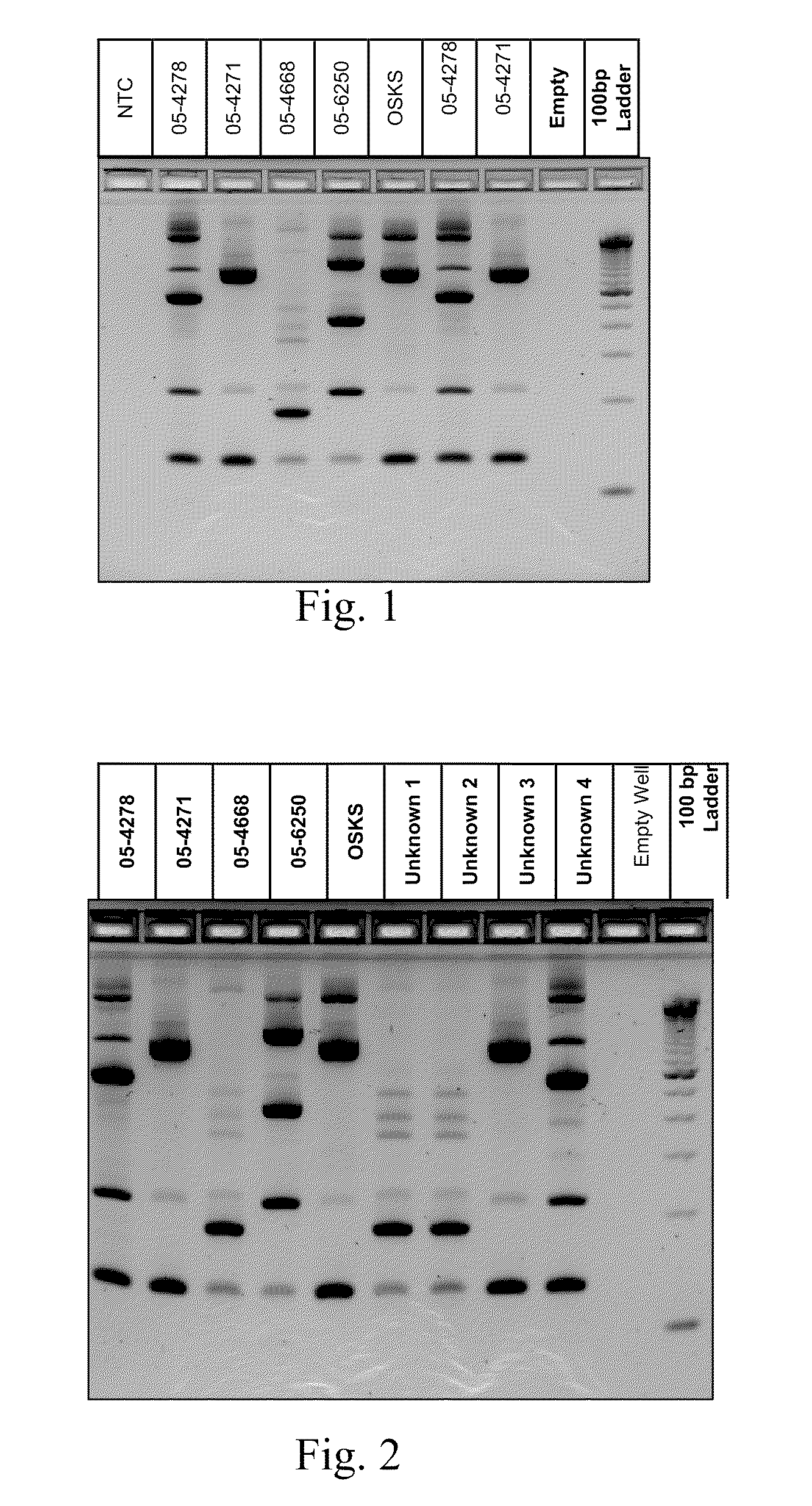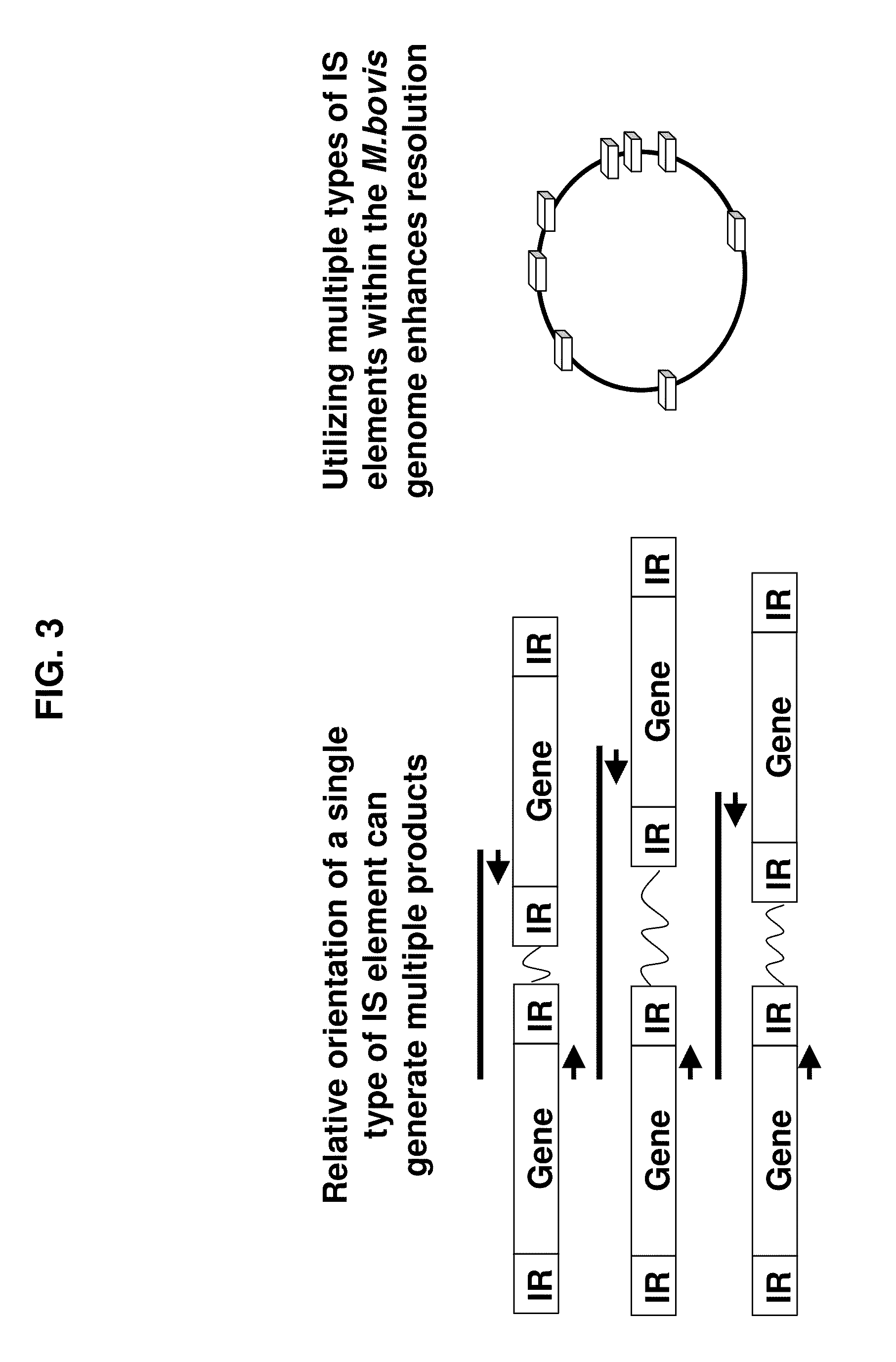Pcr-based genotyping
a genotyping and genotyping technology, applied in the field of pcr-based genotyping, can solve the problems of poor reproducibility of rep-pcr, relatively expensive and difficult procedure of dna sequencing, and low reproducibility of methods, so as to increase the sample throughput or analysis
- Summary
- Abstract
- Description
- Claims
- Application Information
AI Technical Summary
Benefits of technology
Problems solved by technology
Method used
Image
Examples
example 1
[0016]This example isolates, amplifies and detects the DNA for use with methods of the present invention. Mycoplasma sp. isolates were used in the studies. Isolates were obtained from in-house sources or field isolates obtained from infected animals. Isolates were grown using a combination of mycoplasma selective agar and broth for 1-7 days. To isolate DNA, broth cultures were spun and pelleted. DNA from the pellet was then extracted (using the Qiagen DNeasy Tissue Kit and resuspended in molecular grade water). Genomic DNA was quantitated using Picogreen (Invitrogen). Primers were designed based on the known insertion sequences (transposable elements) present in the bacterial genome (Mycoplasma bovis). Outwardly facing primers were manually selected from the element ends (excluding the terminal repeat regions) at a Tm of 55-58C. PCR reactions were then carried out using a multiplex PCR master mix (Qiagen Multiplex PCR Kit). The reactions contained 1× Master mix, 300 nM of each prime...
example 2
[0017]This Example demonstrates the existence of unique genetic fingerprints between strains of M. bovis. Five field isolates were grown and DNA isolated according to the above protocol. 2-5 ng of DNA from each isolate was amplified according to the above protocol using a multiplex of 4 sets of IS primers identified as SEQ ID Nos 1-8. The amplified products were separated on a Invitrogen E-gel 4% agarose gel containing ethidium bromide (according to manufacturer) for 50 minutes and visualized under UV light. All isolates produced unique patterns. The patterns were reproducible using independent aliquots under the sample PCR reaction conditions. Results are shown below in FIG. 1.
example 3
[0018]This Example identifies unknown strains of M. bovis against a library of known M. bovis strains. M. bovis from infected animals were isolated, DNA extracted and amplified (ing) according to the above protocol using a multiplex of 4 sets of IS primers identified as SEQ ID Nos. 1-8. The amplified products were separated on a Invitrogen E-gel 4% agarose gel containing ethidium bromide (according to manufacturer) for 50 minutes and visualized under UV light. As shown below in FIG. 2, all isolates recovered from infected animals produced an amplification pattern that matched one of the patterns found in a library of suspected strains. Unknown strains 1 and 2 matches 05-4668, unknown strain 3 matches 05-2471 and unknown strain 4 matches 05-4278.
PUM
| Property | Measurement | Unit |
|---|---|---|
| Temperature | aaaaa | aaaaa |
| Temperature | aaaaa | aaaaa |
| Temperature | aaaaa | aaaaa |
Abstract
Description
Claims
Application Information
 Login to View More
Login to View More - R&D
- Intellectual Property
- Life Sciences
- Materials
- Tech Scout
- Unparalleled Data Quality
- Higher Quality Content
- 60% Fewer Hallucinations
Browse by: Latest US Patents, China's latest patents, Technical Efficacy Thesaurus, Application Domain, Technology Topic, Popular Technical Reports.
© 2025 PatSnap. All rights reserved.Legal|Privacy policy|Modern Slavery Act Transparency Statement|Sitemap|About US| Contact US: help@patsnap.com



